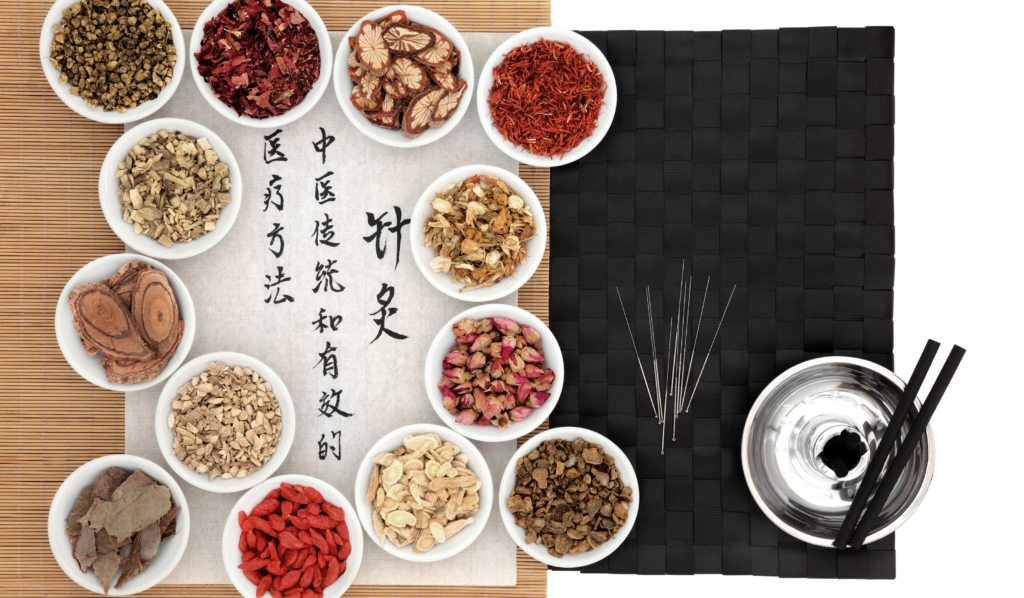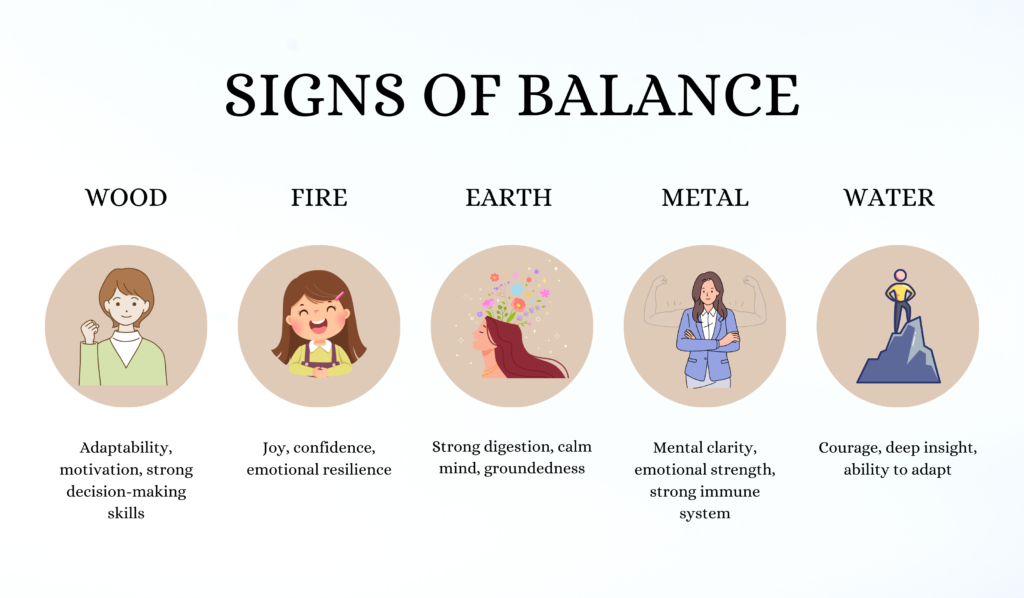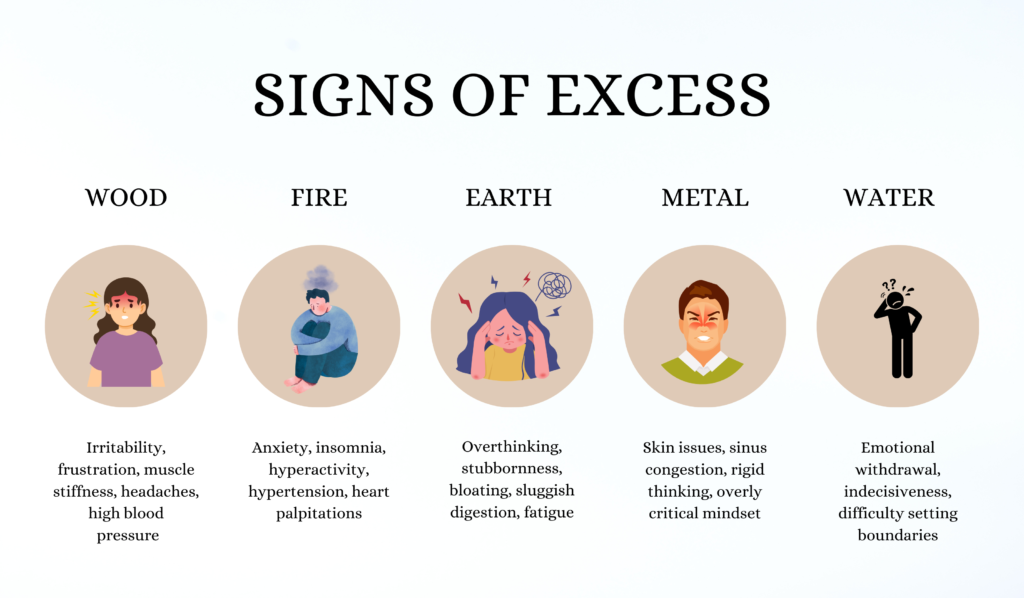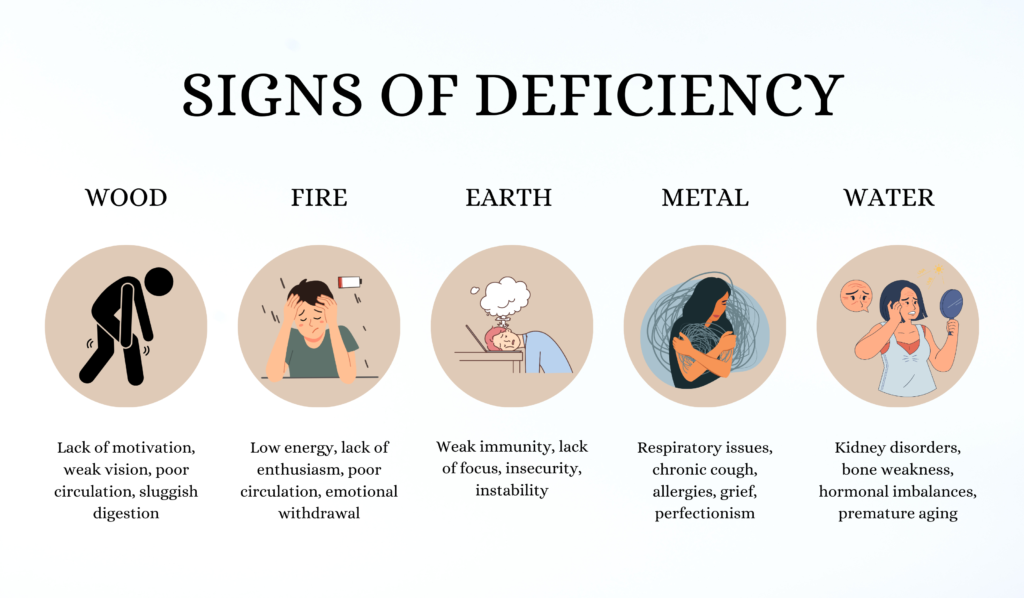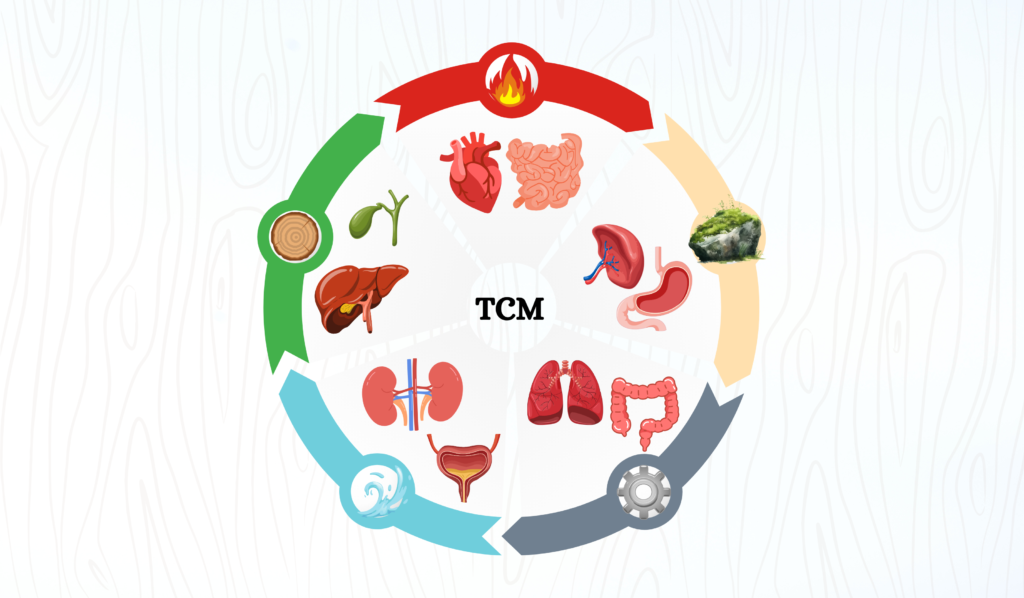The Five Elements: What Science Has to Say About This Chinese Medicine Theory
The Five Elements Theory, also known as Wu Xing, is a core principle in Traditional Chinese Medicine that explains the dynamic relationships between natural forces. This system classifies everything in the universe into five elements: Wood, Fire, Earth, Metal, and Water, each associated with specific qualities, bodily functions, and emotions. For centuries, practitioners have used this framework to understand health, diagnose imbalances, and guide treatments. It serves as a foundation for acupuncture, herbal medicine, and lifestyle recommendations aimed at restoring harmony within the body.
While deeply rooted in ancient philosophy, the Five Elements Theory continues to be explored in modern discussions on health and wellness. Some researchers analyze its principles through the lens of biology, psychology, and environmental science, questioning its validity in the context of contemporary medicine. Others view it as a holistic approach that complements modern healthcare by emphasizing balance and interconnectedness. Understanding this theory offers insight into the evolving dialogue between traditional wisdom and scientific inquiry, highlighting its role in both historical and modern healing practices.
The Five Elements: What Science Has to Say About This Chinese Medicine Theory
The Five Elements Theory, also known as Wu Xing, is a core principle in Traditional Chinese Medicine that explains the dynamic relationships between natural forces. This system classifies everything in the universe into five elements: Wood, Fire, Earth, Metal, and Water, each associated with specific qualities, bodily functions, and emotions. For centuries, practitioners have used this framework to understand health, diagnose imbalances, and guide treatments. It serves as a foundation for acupuncture, herbal medicine, and lifestyle recommendations aimed at restoring harmony within the body.
While deeply rooted in ancient philosophy, the Five Elements Theory continues to be explored in modern discussions on health and wellness. Some researchers analyze its principles through the lens of biology, psychology, and environmental science, questioning its validity in the context of contemporary medicine. Others view it as a holistic approach that complements modern healthcare by emphasizing balance and interconnectedness. Understanding this theory offers insight into the evolving dialogue between traditional wisdom and scientific inquiry, highlighting its role in both historical and modern healing practices.
Key Takeaways
-
The Five Elements Theory links Wood, Fire, Earth, Metal, and Water to specific organs, emotions, and bodily functions, forming the foundation of Traditional Chinese Medicine.
-
Balanced Five Element energies support optimal health, while excesses or deficiencies in any element can lead to emotional or physical imbalances.
-
TCM practitioners use the Five Elements framework to diagnose health issues and develop personalized treatments through acupuncture, herbs, and lifestyle changes.
-
Scientific research explores symbolic and physiological parallels between elemental associations and organ systems, but the theory remains largely metaphorical in Western medicine.
-
Modern integrative medicine incorporates Five Element principles to promote holistic healing, emphasizing balance, prevention, and emotional well-being.
Understanding the Five Elements
The Origins of the Five Elements in Traditional Chinese Medicine
The Five Elements Theory dates back to the Warring States period (475–221 BCE) and emerged as a way to explain natural phenomena and human health. Ancient Chinese scholars observed patterns in nature and recognized that these patterns also applied to the body.
By categorizing these observations into five distinct elements, they developed a system that linked physiological processes, emotions, and environmental influences. Over time, this framework became an integral part of Traditional Chinese Medicine, shaping diagnostic methods, acupuncture, herbal prescriptions, and overall treatment approaches.
What are the Five Elements in Chinese Medicine?
In Traditional Chinese Medicine, the Five Elements represent dynamic forces that correspond to specific organs, seasons, emotions, and bodily functions. Each element plays a distinct role in maintaining overall health and balance:
- Wood – Associated with the Liver, Spring, Anger, and Growth. It represents expansion, flexibility, and renewal. Wood energy is linked to movement, creativity, and the ability to adapt to change. When in balance, it promotes smooth energy flow and emotional resilience. An imbalance in the Wood element can lead to frustration, irritability, and stagnation in both physical and emotional health.
- Fire – Linked to the Heart, Summer, Joy, and Expansion. It governs circulation, passion, and vitality. Fire energy fuels enthusiasm, relationships, and emotional warmth, playing a crucial role in communication and expression. A balanced Fire element fosters confidence and inner radiance, while excess Fire may cause restlessness, anxiety, or hyperactivity. Deficient Fire energy can result in lack of motivation, emotional withdrawal, and poor circulation.
- Earth – Corresponds to the Spleen, Late Summer, Worry, and Transformation. It symbolizes nourishment, stability, and digestion. The Earth element is associated with grounding energy, providing physical and emotional security. It influences digestion, nutrient absorption, and the ability to process experiences. When in harmony, Earth energy supports a strong immune system and emotional centeredness. Imbalances may manifest as digestive issues, excessive worry, or difficulty feeling grounded in daily life.
- Metal – Connected to the Lungs, Autumn, Grief, and Contraction. It governs respiration, structure, and elimination. Metal energy is linked to clarity, discipline, and the ability to let go. It supports the immune system, skin health, and the body’s capacity to release toxins. A well-balanced Metal element promotes order, organization, and the ability to process grief. When out of balance, it can lead to respiratory problems, rigid thinking, or difficulty moving on from past experiences.
- Water – Related to the Kidneys, Winter, Fear, and Storage. It represents fluidity, adaptability, and preservation of life force. Water energy is connected to wisdom, intuition, and the ability to endure challenges. It plays a key role in reproductive health, bone strength, and the regulation of bodily fluids. Balanced Water energy fosters resilience, deep reflection, and emotional depth. Imbalances can result in fearfulness, exhaustion, kidney-related issues, or difficulty adapting to life’s uncertainties.
The Five Elements and Their Characteristics
In Traditional Chinese Medicine, each of the Five Elements plays a vital role in maintaining balance within the body. These elements govern specific organs, emotions, and physiological processes, influencing both physical and mental well-being. When an element is in harmony, it supports optimal health, but imbalances can lead to dysfunction and disease. Understanding these relationships helps practitioners diagnose conditions and tailor treatments accordingly.
| Element | Associated Organs | Positive Traits |
| Wood | Liver, Gallbladder | Growth, flexibility, creativity, movement, renewal |
| Fire | Heart, Small Intestine | Passion, transformation, dynamic energy, warmth, emotional connection |
| Earth | Spleen, Stomach | Stability, nourishment, digestion, security |
| Metal | Lungs, Large Intestine | Structure, organization, discipline, refinement |
| Water | Kidneys, Bladder | Wisdom, intuition, adaptability, resilience |
Signs of Balance
A balanced element supports the body’s natural functions, promoting health and stability.
- Wood energy encourages adaptability, motivation, and strong decision-making skills. When in harmony, it ensures smooth energy flow and emotional resilience.
- Fire energy fosters joy, confidence, and emotional warmth, promoting passion and mental clarity.
- Earth energy provides stability, strong digestion, and a calm, grounded mind. It supports nourishment and a healthy immune system.
- Metal energy enhances mental clarity, emotional strength, and strong immune function, fostering discipline and the ability to process emotions.
- Water energy contributes to courage, deep insight, and adaptability, allowing for emotional depth and resilience.
Signs of Excess
When an element is excessive, it overpowers its natural balance, leading to disruptions in the body and mind.
- Excess Wood can manifest as irritability, frustration, and difficulty managing emotions. Physical symptoms include muscle stiffness, headaches, and high blood pressure.
- Excess Fire may cause anxiety, insomnia, hyperactivity, and an overactive mind. This imbalance can lead to hypertension, heart palpitations, and excessive emotional intensity.
- Excess Earth can result in overthinking, stubbornness, and emotional heaviness. It may cause bloating, sluggish digestion, fatigue, and difficulty concentrating.
- Excess Metal can appear as rigid thinking, perfectionism, or an overly critical mindset. Physical symptoms may include sinus congestion, skin issues, and respiratory problems.
- Excess Water may lead to emotional withdrawal, indecisiveness, and difficulty setting boundaries. It can also contribute to stagnation and an inability to take action.
Signs of Deficiency
A deficient element lacks the necessary energy to perform its functions properly, leading to weaknesses in the body and mind.
- Deficient Wood may cause lack of motivation, weak vision, poor circulation, and sluggish digestion. Emotional stagnation and difficulty planning or making decisions are common.
- Deficient Fire results in low energy, lack of enthusiasm, emotional withdrawal, and poor circulation. Individuals may feel disconnected, fatigued, or experience cold hands and feet.
- Deficient Earth weakens the immune system and digestion, leading to lack of focus, feelings of insecurity, and instability. It may also cause poor nutrient absorption and chronic fatigue.
- Deficient Metal can lead to respiratory issues such as chronic cough, asthma, and allergies. Emotionally, it may cause prolonged grief, inability to let go, and a sense of detachment.
- Deficient Water manifests as kidney disorders, bone weakness, hormonal imbalances, and premature aging. It can also result in chronic fear, low stamina, and difficulty handling stress.
Understanding these signs helps practitioners identify imbalances and develop treatment strategies to restore harmony within the body.
The Five Chinese Elements Theory
At its core, the Five Elements Theory describes how these elements interact to maintain balance within the body. Each element is not static but exists in a continuous cycle of transformation. When functioning optimally, the body remains in harmony, but disruptions can lead to illness. Practitioners analyze these elemental relationships to determine the root causes of imbalances and apply appropriate interventions.
The Cycles of the Five Elements
The Five Elements exist in a state of continuous interaction, influencing and regulating one another to maintain balance in the body and the environment. These interactions occur through four primary cycles: the Generating (Sheng) Cycle, the Control (Ke) Cycle, the Overacting (Cheng) Cycle, and the Counteracting (Wu) Cycle. Each plays a crucial role in Traditional Chinese Medicine by guiding diagnosis and treatment strategies.
Generating (Sheng) Cycle – How Each Element Nourishes the Next
The Generating Cycle illustrates how each element supports and sustains the next in a natural, cyclical progression. This flow of energy maintains harmony and ensures the continuous renewal of life.
- Water nourishes Wood – Just as water enables plants to grow, Water energy supports the Liver and Gallbladder, fostering renewal and flexibility.
- Wood fuels Fire – Wood provides fuel for Fire, symbolizing how Liver energy supports the Heart, ensuring vitality and emotional warmth.
- Fire creates Earth – The ashes from Fire enrich the soil, demonstrating how Heart energy contributes to digestion and nourishment through the Spleen.
- Earth produces Metal – Minerals form within the Earth, representing how a strong digestive system nourishes the Lungs and Large Intestine.
- Metal enriches Water – Metal elements like minerals dissolve into Water, signifying how the Lungs and Large Intestine influence Kidney health and fluid regulation.
When this cycle functions optimally, energy moves freely, and the body remains in a balanced state. Disruptions, however, can lead to deficiencies or stagnation in the elements, affecting health and well-being.
Control (Ke) Cycle – How Elements Maintain Balance
The Control Cycle ensures that no element becomes too dominant by keeping the others in check. This self-regulating system maintains equilibrium within the body.
- Water controls Fire – Water extinguishes Fire, preventing excess heat and inflammation in the body.
- Fire melts Metal – Heat softens Metal, ensuring flexibility in both the respiratory system and mental adaptability.
- Metal cuts Wood – Tools made of Metal prune trees, symbolizing how the Lungs regulate Liver energy and prevent excessive emotional outbursts.
- Wood stabilizes Earth – Tree roots hold soil in place, representing the Liver’s role in supporting digestive health and nutrient absorption.
- Earth absorbs Water – Soil retains Water, demonstrating how the Spleen helps regulate fluids and prevent imbalances such as edema.
A well-functioning Control Cycle prevents excessive energy buildup, ensuring that all elements operate in harmony. However, when an element exerts too much control, it leads to imbalances and health disorders.
Overacting (Cheng) Cycle – When an Element Becomes Too Strong
The Overacting Cycle occurs when an element becomes excessively dominant, suppressing the element it should regulate. This disrupts the normal flow of energy and may cause health issues.
- Excess Wood overgrows and depletes Earth, leading to digestive problems such as bloating and weak metabolism.
- Excess Fire scorches Metal, contributing to lung-related issues like chronic inflammation or dry skin conditions.
- Excess Earth buries Water, causing stagnation and kidney-related concerns such as fluid retention or fatigue.
- Excess Metal dominates Wood, stifling creativity and emotional flexibility, leading to rigid thinking or depression.
- Excess Water floods Fire, suppressing motivation, enthusiasm, and emotional warmth, often resulting in fear-based behaviors.
This cycle highlights how unchecked energy can create imbalances that need to be addressed through lifestyle changes, acupuncture, and herbal treatments.
Counteracting (Wu) Cycle – When an Element Opposes Instead of Balances
The Counteracting Cycle is a more extreme version of the Control Cycle, where an element rebels against the system instead of maintaining equilibrium. This leads to instability in both the body and mind.
- Wood counteracts Metal – Overgrowth of Wood (e.g., excessive stress or anger) weakens the respiratory system and immune function.
- Fire counteracts Water – Excess heat evaporates Water, leading to dehydration, burnout, or kidney imbalances.
- Earth counteracts Wood – Too much Earth energy (e.g., over-worrying) can suppress creativity and emotional expression.
- Metal counteracts Fire – Excess Metal energy stifles passion and emotional warmth, potentially causing depression or social withdrawal.
- Water counteracts Earth – Excess Water (e.g., overwhelming fear) weakens digestion and can cause issues like bloating or poor appetite.
When this cycle is out of control, symptoms may manifest as chronic health conditions that require intervention to restore balance.
How the Five Elements Are Used in Traditional Chinese Medicine to Treat Various Health Conditions
Practitioners use the Five Elements Theory to assess imbalances and develop personalized treatment plans. By identifying which element is excessive or deficient, they can recommend:
- Acupuncture – Stimulating meridian points associated with each element to restore balance.
- Herbal Therapy – Prescribing herbal formulas that strengthen weak elements or calm excessive ones.
- Dietary Therapy – Adjusting food choices to nourish or regulate a particular element.
- Qi Gong and Tai Chi – Physical practices that align the body’s energy flow with natural rhythms.
- Lifestyle Modifications – Recommendations such as stress reduction techniques and emotional well-being practices.
For example, someone experiencing anger and tension (excess Wood energy) may benefit from Liver-soothing herbs and acupuncture points that calm the nervous system.
How to Balance the Wu Xing / Five Elements in Chinese Medicine
Restoring balance in the Five Elements involves a combination of lifestyle adjustments, emotional regulation, and targeted treatments:
- Acupuncture – Stimulates the body’s meridians to strengthen weak elements or calm excessive energy.
- Herbal Medicine – Formulas are tailored to nourish deficient elements or regulate overactive ones.
- Dietary Changes – Eating foods that align with the seasons and elemental needs can help rebalance the body.
- Mind-Body Practices – Tai Chi, Qi Gong, and meditation support emotional stability and energetic harmony.
- Environmental Adjustments – Surrounding oneself with colors, scents, and activities that correspond to the needed element can promote well-being.
If someone lacks Earth energy, incorporating warming foods like sweet potatoes, mindfulness exercises, and grounding movements can help restore stability. Similarly, excess Fire energy may require cooling foods, calming herbs, and deep-breathing exercises.
By recognizing the interplay between the elements and the body, individuals can take proactive steps toward long-term health and wellness.
Scientific Perspective on the Five Elements and Their Correspondence to the Human Body
Modern medical science largely operates within the framework of biochemistry, physiology, and anatomy, relying on measurable data and clinical trials. Unlike the Five Elements Theory, which describes health in terms of energy flow and elemental interactions, Western medicine focuses on molecular biology, organ systems, and biochemical processes. This fundamental difference in perspective creates challenges in validating TCM theories through conventional scientific methods.
Some researchers have attempted to draw parallels between the Five Elements and physiological functions. For example, the Wood element, associated with the Liver and Gallbladder, aligns with modern understandings of liver detoxification and its role in regulating metabolism. The Fire element, which corresponds to the Heart and Small Intestine, has been linked to the circulatory and digestive systems, both of which are critical for maintaining overall energy levels and homeostasis. The Earth element, governing the Spleen and Stomach, resonates with modern knowledge of digestion and nutrient absorption. The Metal element, connected to the Lungs and Large Intestine, plays a role in respiration, immunity, and detoxification. Finally, the Water element, linked to the Kidneys and Bladder, aligns with the body’s fluid regulation, electrolyte balance, and stress adaptation through the adrenal system.
While these parallels suggest that the Five Elements Theory may have a basis in biological function, critics argue that its classifications lack the specificity and empirical rigor required by modern medicine. The concept of Qi, the fundamental energy in TCM, does not have a direct equivalent in Western physiology, making it difficult to measure or study in a controlled setting.
Acupuncture and the Five Elements
Acupuncture, one of the primary treatment methods based on the Five Elements Theory, has been extensively researched in modern medicine. Several clinical trials and meta-analyses have shown that acupuncture can be effective in treating conditions such as chronic pain, migraines, anxiety, and digestive disorders. Studies suggest that acupuncture influences neurotransmitter release, endorphin production, and blood circulation, which may explain some of its therapeutic benefits.
However, the specific role of the Five Elements in acupuncture remains unproven by clinical research. Most studies focus on acupuncture’s effects on nerve pathways and brain function rather than its elemental associations. Critics argue that while acupuncture’s physiological effects may be real, the Five Elements Theory itself may not be a necessary framework for explaining those effects. Some researchers propose that placebo responses, patient expectations, and the therapeutic ritual of acupuncture contribute significantly to its effectiveness rather than any direct influence of elemental energies.
Herbal Medicine and the Five Elements: Are the Connections Valid?
Herbal medicine, another key component of the Five Elements Theory, has gained more recognition in modern scientific research. Many TCM herbs, such as ginseng, astragalus, turmeric, and licorice root, have been studied for their medicinal properties, with findings that support their use in immune function, inflammation reduction, and metabolic regulation. However, the classification of these herbs within the Five Elements system is largely based on traditional observations rather than biochemical analysis.
For example, in TCM, cooling herbs are used to reduce excess Fire energy, while warming herbs are recommended for Water deficiencies. Modern pharmacology, however, classifies herbs by their active compounds, antioxidant properties, and their effects on specific receptors rather than their energetic qualities. While there is overlap between the two systems, many scientists argue that the Five Elements framework is more of a metaphorical tool rather than a scientifically verifiable model for prescribing herbal medicine.
Psychological and Environmental Science: A More Symbolic Interpretation?
Researchers in psychology and environmental science have explored the Five Elements Theory as a symbolic representation of human personality and environmental balance rather than a literal medical system. In personality psychology, the Five Elements have been compared to Carl Jung’s psychological archetypes and the Big Five Personality Traits, where different elements reflect different emotional and behavioral tendencies.
From an environmental perspective, the Five Elements Theory aligns with ecological models of balance and sustainability, where natural systems regulate themselves through cycles of generation and control. Some sustainability researchers have explored the Five Elements as an ancient model for understanding ecosystems, climate patterns, and human interactions with nature.
Bridging the Gap Between Science and Tradition
While the Five Elements Theory does not fit neatly into the framework of Western science, researchers advocate for a more integrative approach that combines traditional knowledge with modern evidence-based medicine. Instead of dismissing the Five Elements as pseudoscience, some experts suggest that it can be used as a holistic framework for understanding health, lifestyle, and emotional well-being rather than as a direct medical model.
Some hospitals and integrative medicine clinics now offer TCM-based therapies alongside conventional treatments, particularly in areas such as pain management, stress reduction, and digestive health. Even without direct scientific validation of the Five Elements, its emphasis on balance, prevention, and individualized care resonates with modern wellness approaches.
While more research is needed to fully validate or refute the Five Elements Theory in medical science, its longevity and widespread use in traditional medicine suggest that it remains a valuable tool for many practitioners and patients alike. Whether viewed as a metaphor, a complementary system, or a philosophy of health, the Five Elements Theory continues to shape holistic healthcare discussions around the world.
Bringing Ancient Wisdom into Modern Healing
The Five Elements Theory remains a cornerstone of Traditional Chinese Medicine, offering a holistic perspective on health that integrates physical, emotional, and environmental influences. While modern science continues to explore its validity, the enduring principles of balance, interconnectedness, and natural rhythms make it a valuable framework for wellness. Whether used as a diagnostic tool, a guide for acupuncture, or a foundation for herbal therapy, this ancient system continues to shape healing practices worldwide.
At ACA Acupuncture and Wellness, our practitioners incorporate the wisdom of the Five Elements into personalized treatment plans, helping patients restore balance and vitality. By understanding the relationships between the elements and the body, we tailor acupuncture, herbal medicine, and lifestyle recommendations to support overall well-being. Whether you are seeking relief from physical discomfort, emotional stress, or chronic imbalances, our integrative approach provides a pathway toward better health and harmony.
As science continues to bridge the gap between traditional wisdom and modern medicine, the Five Elements Theory stands as a testament to the body’s natural ability to heal when given the right support. Embracing its principles can empower individuals to take charge of their health, adapt to seasonal changes, and cultivate a sense of balance in daily life.
Sources:
Ma, Z., Jia, C., Guo, J., Gu, H., & Miao, Y. (2014). Features analysis of five-element theory and its basal effects on construction of visceral manifestation theory. Journal of Traditional Chinese Medicine, 34(1), 115-121.
Frequently Asked Questions
What is the main purpose of the Five Elements Theory in Traditional Chinese Medicine?
The Five Elements Theory serves as a diagnostic and treatment framework in TCM, helping practitioners understand the relationships between organs, emotions, and environmental influences. It guides acupuncture, herbal medicine, and lifestyle recommendations to restore balance and promote overall health.
How do the Five Elements influence personality and behavior?
Each element is associated with specific personality traits and emotional tendencies. Wood individuals are ambitious and driven, Fire types are expressive and passionate, Earth personalities are nurturing and stable, Metal individuals are disciplined and analytical, and Water types are introspective and intuitive. Understanding these traits can help with self-awareness and personal growth.
Do the Five Elements change throughout a person’s life?
Yes, the balance of elements can shift due to age, lifestyle, environmental factors, and emotional experiences. For example, a person may have strong Fire energy in their youth but develop more Earth characteristics as they age. TCM treatments aim to maintain harmony among these shifting energies.
Can the Five Elements Theory explain physical symptoms and diseases?
Yes, in TCM, imbalances in the Five Elements are thought to contribute to specific health issues. For example, excess Wood energy can lead to migraines and high blood pressure, while weak Earth energy may cause digestive problems. Practitioners use this theory to identify patterns and create personalized treatment plans.
How does the Five Elements Theory relate to seasonal changes?
Each element corresponds to a season—Wood to Spring, Fire to Summer, Earth to Late Summer, Metal to Autumn, and Water to Winter. TCM suggests adapting lifestyle and diet to align with these seasonal shifts, such as eating cooling foods in summer (Fire) or warming foods in winter (Water) to maintain balance.
Is the Five Elements Theory still relevant in modern healthcare?
While the Five Elements Theory is not widely used in conventional medicine, it remains an important aspect of holistic and integrative healthcare. Many wellness practitioners incorporate its principles into acupuncture, herbal medicine, stress management, and preventive care, recognizing its value in promoting balance and well-being.
Contact ACA Acupuncture & Wellness
Get in Touch
Newsletter Sign Up
LOCATIONS
MANHATTAN
QUEENS
NEW JERSEY
CALIFORNIA

ACA Franchise Opportunities
The over $4 billion US acupuncture market offers a great opportunity with over 10% annual growth rates and a continuing flow of new patients interested in the benefits of acupuncture.




